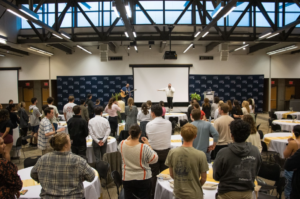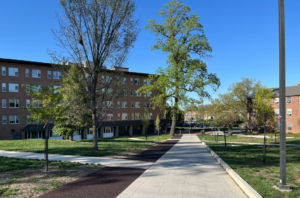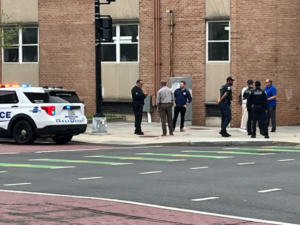Women’s March 2020: The Last of It?

Courtesy of Francesca Faccani
By Francesca Faccani
The nation’s capital drew approximately 10,000 protestors for the fourth Women’s March on January 18th. Among the people in the march was a group of students from Catholic University. Students who attended included members from College Democrats, that gathered at 11 a.m. in Freedom Plaza.
The march also drew a high percentage of men, children, and elderly women, all fervently waving their signs. Tyler Farrar, a Sophomore in College Democrats who attended the march, expressed his feelings towards the participants.
“It was a great experience to be a part of such a large and diverse group standing together in support of women’s issues,” said Farrar. “I was so proud of how many CUA had there and felt privileged to stand alongside so many strong women.”
Now in its fourth year, the march was first intended as a direct response to some of President Donald Trump’s statements that were considered misogynistic, hence the decision to have it on the day after his inauguration in 2017. Over the years, the protestors have varied themes based on the current societal topics. On paper, this year’s women’s march focused on three topics: climate change, immigration, and pro-choice rights. The signs that people brought to the march, however, didn’t only point in that direction.
While 2020 also marks the 100th anniversary of women’s suffrage in the United States, known as the 19th Amendment, many signs advocated for the adoption of the Equal Right Amendment (ERA) , still not ratified in all the states.
That’s an issue deeply felt by Marie Erickson, a Senior and the former President of the College Democrats, who also attended the March:
“To me, the Women’s March is an inspiring source of strength for women and all people who are marginalized in varied ways, standing in unity alongside each other, calling for a more equitable world,” said Erickson.
The main song that accompanied the march was “A Rapist in Your Path”, performed in both English and Spanish by the Chilean feminine collective Las Tesis. Now a standard for feminist marches, this performance piece protests violence against women, and was accompanied with a dance, which was carefully taught during the introduction at Freedom Plaza.
There, the stage was held up by two main speakers: Martin Luther King III, son of MLK Jr., and his wife, Andrea Waters King, who underlined the importance of peaceful protests in times where democracy and freedom seem to be taken for granted.
Chloe Van Syckel, a Sophomore in College Democrats who also marched, expressed her feelings towards the energy that accompanied the march:
“The march was so empowering and I really felt an electric energy throughout the day that has gone unmatched,” said Van Syckel. “I loved sharing it with my fellow dems and best friends.”
As the years pass, fewer and fewer people have showed up to the Women’s March in the Capital. According to the Washington Post, in 2017, approximately 500,000 people attended the march, which is a significantly larger number than this year’s attendance of approximately 15,000 people. According to WUSA, some of the reasons that contribute to the decrease in numbers may be either the fragmentation of the protests all over the country, or the channeling of the various themes in different marches, including the Fridays for Future and March for our Lives.
Protestors, however, are still fervent and with both the elections and the current impeachment trials, all of their energy seems focused on one topic: the removal of President Trump from office. Protestors are now asking the question: will the march survive President Trump’s administration and perpetuate feminist values, or was it only a moment’s reaction to their endangerment?








